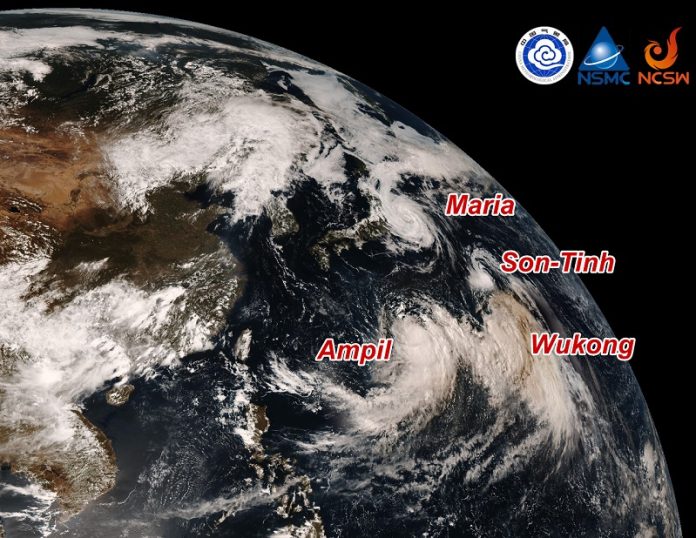
In August, Japan and South Korea saw an unusual increase in typhoons. Between August 8 and August 13, four typhoons—Maria, Son-Tinh, Ampil, and Wukong—formed one after the other near Japan.
Tropical Storm Maria caused record rainfall in northern Japan, and soon after, Typhoon Ampil struck during Japan’s Obon holiday, causing serious damage.
Then, by August 19, two more typhoons, Jongdari and Shanshan, quickly developed and hit South Korea and Japan.
This pattern of storms happening close together is called multiple tropical cyclone (MTC) formation. On average, about five such events happen in the region each year. These clusters of storms increase the risk of disasters, making it important to understand why they occur.
A team of researchers led by Professor Ruifen Zhan from Fudan University has been studying why typhoons tend to cluster.
Their findings, published in Advances in Atmospheric Sciences, highlight several important weather patterns that cause typhoons to form close together.
Key Weather Patterns Behind Typhoon Clustering
- Monsoon Trough: This pattern forms when a high-pressure system in the subtropics interacts with the monsoon trough, a low-pressure zone that forms in tropical regions. Typhoons often develop along this trough and nearby areas.
- Confluence Zone: This is where different wind currents meet, such as the southwesterly and southeasterly winds. According to Prof. Zhan, these meeting points create conditions that make it easier for typhoons to form, especially when influenced by surrounding high-pressure systems.
- Easterly Waves: These slow-moving waves of wind travel from east to west and often help in forming typhoons along their path.
- Monsoon Gyre: A large rotating system of winds, also known as a monsoon vortex, can provide the perfect environment for typhoons to form within its spinning winds.
Each of these weather patterns plays a role in creating the right conditions for typhoons to form and cluster. For example, the Monsoon Trough is driven by specific wind and moisture conditions, while the Confluence Zone depends on the interaction of different wind systems.
Prof. Zhan’s research helps scientists better understand these weather patterns and how they lead to multiple typhoons forming in a short time.
“This study provides a theoretical foundation to improve predictions and early warnings for these complex events,” Prof. Zhan said. With better knowledge of how these storms form, scientists can improve forecasting, helping communities better prepare for future typhoons.



